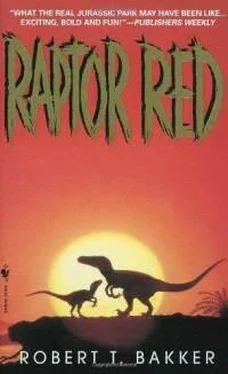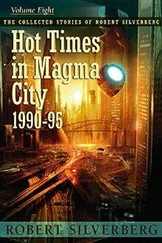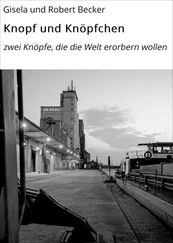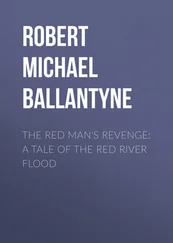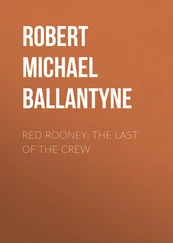Raptor Red and her sister move their bodies to get the benefit of the sun’s warmth. The chicks are fine - all through the day and a half of rain, they kept themselves stuck under the adults. The soft, thin belly skin of Raptor Red and her sister kept the chicks warm.
The tree crown comes alive with animals stretching their joints. Fingers and toes that had been tightly clenched for so many hours are painfully, slowly extended and flexed and extended. Species who are mortal enemies on the ground are side by side now. But the predators are too chilled, too shaken to resume killing.
Raptor Red sees something moving below that appears to be half-turtle, half-crocodile, half-iguanodon. She’s never seen anything like it. It’s about forty pounds, its back covered with armor plate, its sides studded with bony spikes. Its long tail ends in a small club of bone. Even its upper eyelids are armored.
Raptor Red reaches down to sniff - her curiosity makes her forget the rainy ordeal.
She can just touch the strange armored animal with her left foot. She extends her toes and gives it a shove.
Wham-thwack-thwack-thwacky-thwack!
She pulls her foot up just before the beast flails its spike-edged tail convulsively. Branches break, and the armored beast falls ten feet onto a soft, soggy mound of conifer needles.
Whacky-thwack! Another convulsion. The beast falls again, onto a tangle of flotsam and jetsam.
It’s a baby Gastonia, an armored dinosaur. Raptor Red has never seen one before.
The sun gets very hot. Raptor Red can see dry ground not far away - it will be an easy swim once she has warmed up a bit.
Other dinosaurs are sunning themselves too, in preparation for their descent. In a few hours the flood-truce will be over. Predators and herbivores who now share branches in peace will be back down on the ground, trying to kill and avoid being killed.
Raptor Red looks around at the many pairs of eyes staring out from the conifer crown. One pair of eyes is staring right back. It bobs up and down. Raptor Red can see a long snout in front of the eyes, and on the snout is a bright crimson streak.
It’s the male who tried to court her near Tick-Bird Meadow. Now he goes into a modified courtship dance, hanging on to the tree with his hindfeet, moving his shoulders and neck gracefully.
Whack-whack-clank-crack.
Ouch! the big Acrocanthosaurus thinks as his tooth crown breaks off, leaving the nerve exposed. He drops the little armored dinosaur he was trying to swallow.
Whackity-whackity - WHACK.
Ouch. He reacts again to a sharp pain on his shin where the armored dino’s spikes hit.
WHACK-WHACK-WHACK. The little dino is like a big ultraprickly pinecone, made of bone and muscle, powered by a spastic motor. The acro backs up again, his ankle smarting from a dozen hits from the armored protuberances.
Whump-whack-whump. The baby Gastonia twitches nose to tail again, sending clods of mud over the acro.
No good - not worth the trouble, the acro thinks to himself. He doesn’t like food morsels that make him bleed inside and out. He’s swallowed crocodiles whole before. Their bony ridges were a bit painful as they slid down his gullet. But this little armor-clad demon is much worse.
His broken tooth throbs - it was a fully developed tooth, not ready to be shed. There’s no discomfort when a tooth crown drops out on schedule. The root gets resorbed, the nerve and blood vessel dry up, and the new tooth growing in under the old crown simply pushes the remnant out of the jaw.
But the gaston has whacked the acre’s teeth hard from inside the acro’s mouth as the big predator was about to gulp it down. Several healthy crowns, still connected to nerves, are now cracked.
The acro backs up again. Then he runs forward and tries to kick the gaston. The little dino hunkers down so close to the ground that the acro misses. The acro steps hard on the gaston’s body, flattening it into the mud.
Blurp. The gaston blows watery mud out of his nostrils.
The acro comes to a conclusion: Pinecone dinosaurs - not food.
The acro certainly doesn’t need this nasty tidbit. A hundred tons of carrion piled up along the river sandbars after the flood - thousands of dinosaur bodies, limp and battered, caught in groves of trees and thickets of cycads. It’s a scavenger’s smorgasbord.
After the frustrated meat-eater wanders away, the baby gaston stands up and sniffs the breeze. The gaston’s not real bright compared to a raptor. Like most dino-herbivores, the gaston has only a medium-size brain, about the size of a crocodile of the same body bulk. That’s far less mental mass than a Deinonychus or a Utahraptor has.
And being an herbivore doesn’t supply the mental challenges that an active predator gets every day. A gaston doesn’t have to hunt very far for food - it uses its broad, low muzzle to crop off wide mouth-fuls of conifer seedlings and cycads, food that doesn’t fight back or run away.
The baby gaston knows only a few things, but he knows them very well: Eating the right plants. Avoiding poisonous plants. (He was born with a poison-alarm system, programmed into his olfactory sense.) Avoiding falling off cliffs. (Most land vertebrate species are born with a fear of steep slopes.)
And go whackity-whack when he’s bothered by something.
Since every vulnerable corner of his body is protected by strong bony plates of armor with sharp ridges or spikes sticking out, whackity-whack is a pretty useful response to most threatening situations. The gaston has a short but strong neck, with wide muscles for swinging the armored head side to side. The long torso is so broad and low that predators have a hard time flipping the gaston over on its back. And the long tail has the strongest sideways-flexing muscles, compared to body weight, of any dinosaur.
Whackity-whack has been the simple and successful defensive game plan of the Gastonia species and their ancestors for thirty million years, since the first member of the Ankylosaurian order evolved, far back in the Jurassic Period.
The baby gaston hasn’t a clue how he ended up in the tree. He remembers that he was huddled with his family, facing downwind to keep the rain out of their eyes, on a tall levee - a raised mound of mud that bordered a river. All of a sudden the levee broke. A brutally strong wall of water smashed through the breach, hurling jagged chunks of soil and muck across the floodplain, bowling over the adult gastons and washing away the little ones.
The baby gaston shut his eyes and went whackity-whack at the floodwater. He kept his armored eyelids shut for nearly two days afterward. He remembers being bumped in three dimensions, going up, going down, and then far up; then movement stopped. The sun came out, and he was just beginning to dry out when someone kicked him, and he fell into the water again.
He found himself beached on a low spit of sand. Had he kept his eyes open, he would have seen that he had, in fact, performed a spectacular trick worthy of the finest circus.
He had gotten caught in the branches of a ripped-up cycad tree. Cycad trunks are low-density compared to most other trees, and the cycad with the gaston aboard had bobbed like a balsa raft. It washed downstream for two miles, then jammed itself against a grove of old conifers. A particularly fast burst of floodwater pushed the cycad around and around and finally slid the lightweight cycad wood up the sloping trunks of three partially fallen conifers. The gaston had fallen off the cycad and landed on the lower branches of an old conifer.
Thanks to Raptor Red’s curiosity, the gaston had been pushed out of the tree. But the currents were abating, and he was carried only a short distance before being left aground.
Читать дальше
